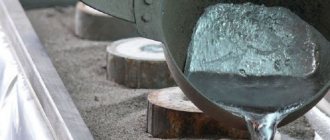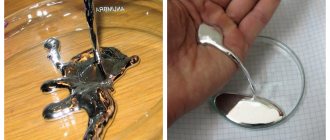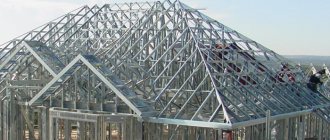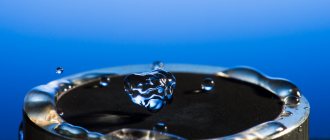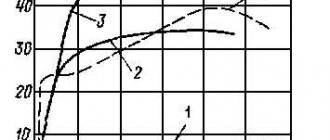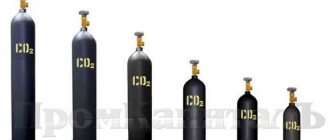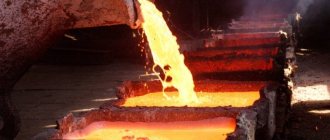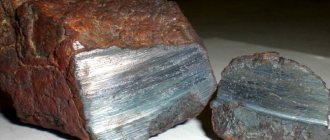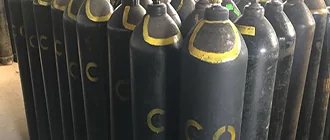In this article:
1. Properties of aluminum
2. Aluminum alloys
3. Raw materials for aluminum production 3.1. Aluminum ores
3.2. Bauxite
3.3. Nephelines
3.4. Alunites
3.5. Other raw materials
3.6. Cryolite production
4. Aluminum refining
Aluminum was first isolated in its free form in 1825 by the Danish physicist Oersted. Currently, aluminum is produced on an industrial scale by electrolytic means. A method for producing aluminum metal by electrolysis of alumina dissolved in cryolite was patented in 1886 independently by Paul Héroux in France and Charles Hall in the USA.
Aluminum production has developed at an extremely rapid pace since then, thanks to the importance that aluminum has acquired in industry. Until 1917, our country did not have its own aluminum smelter, although Russian scientists made a great contribution to aluminum metallurgy. In 1929, aluminum was produced at the Leningrad plant using Volkhov energy and domestic raw materials. In 1932, the Volkhov Aluminum Plant was put into operation, and in 1933, the Dnieper Aluminum Plant. Subsequently, aluminum smelters were built in various regions of our country.
The creation of a powerful energy base allowed our country to quickly become one of the first places in aluminum production.
Aluminum production in Russia and the world
Aluminum production volume in 2022 is 72 million tons. The international aluminum market is in deficit of 277 thousand tons. The largest producing countries of this metal are China, Russia, the USA, Australia, Brazil and India. Countries in North and South America are actively reducing bauxite production. The growth in pure aluminum production is driven by countries in the Middle East and Asia. These regions contain over 73% of the world's reserves of aluminum ores lying on the earth's surface. They lack a large number of metallic and gaseous substances. The largest aluminum producers in the world are the following transnational companies:
- UCRUSAL: Russian concern producing 13% of all aluminum alloys in the world. The company's production volume is 3.75 million tons per year. RUSAL has its own engineering and technical base and exports its products to Europe, North America and Southeast Asia.
- Chalco: A Chinese state-owned corporation, it is the second largest producer of aluminum materials in the world. The production volume is 3.4 million tons per year.
- RioTinto: Australian-British mining and metals company producing alumina. The concern's production volume is 3.1 million tons per year. RioTinto forms a joint venture with the Canadian organization Alcan to mine bauxite.
There is an oversupply of capacity in the market of the leading countries in the production of pure aluminum. This is due to the cyclical nature of demand and a large number of competitive enterprises. To reduce overcapacity, many enterprises began to export aluminum semi-finished products. Since 2015, sales of these products have grown by 20% annually.
There are 17 plants producing alumina and aluminum sheets in the Russian Federation. Most of the enterprises are located in the Urals and Siberia. The high efficiency of Russian aluminum smelters is determined by the following production location factors:
- Raw materials: enterprises are located near the main aluminum deposits. This allows you to reduce the cost of transporting raw materials and reduce the cost of finished products
- Energy: Pure aluminum is produced through electrolysis, so the plants are located near large hydroelectric power plants that generate large amounts of electrical energy.
- Consumer factor: the products of Russian aluminum producing companies are purchased by countries in South and North America, Asia, the Middle East, Europe and Africa.
- Transport: factories are located near major transport hubs, allowing for efficient transportation of raw materials and finished products over long distances. Railroad trains are most often used to transport metal.
Currently, aluminum production in Russia is declining and amounts to 7.3 million tons per year. This is due to the destruction of intersectoral and economic ties with the countries of the former USSR.
Production technology
Aluminum production technology includes 3 main stages:
- Bauxite mining.
- Processing of aluminum-containing ores into alumina.
- Isolation of pure metal from alumina through electrolysis and its purification from excess impurities.
The production of this chemical element is carried out in the electrolysis workshop. It consists of several buildings with a length of 1000 m. It contains electrolysis baths with large wires connected to a power source. The baths are equipped with electrodes energized at 6 V.
Most of the processes in the electrolysis shop are automated. Before electrolysis begins, the tank capacity is filled with molten cryolite. This substance is intended to create a conductive environment at high temperatures. The bottom of the bath acts as a cathode. The anode is carbon blocks immersed in cryolite.
In industry, aluminum is produced by the method of pyrometallurgy, developed by the German chemist Carl Joseph Bayer. This method is the reduction of metal using carbon dioxide or carbon monoxide. All work at the enterprise is carried out in accordance with aluminum production schemes, which detail the process of alumina electrolysis. Initially, a portion of alumina is loaded into the bath. When exposed to electricity, the substance decomposes. As a result, the bond between the aluminum and oxygen particles is broken.
After electrolysis, pure aluminum remains in the molten state at the bottom of the electrolytic bath. Oxygen reacts with carbon to form carbon dioxide. The resulting material is poured into vacuum ladles and delivered to the foundry. Here the metal is subjected to heat treatment. By remelting, excess impurities are removed from the alloy. As a result, the substance takes on a solid form and is sorted into blocks weighing up to 22 kg.
Aluminum retains its properties during long-term use. Therefore, some aluminum products are recycled and reused to create pure metals, which has a positive impact on the environment. The volume of environmental protection costs in this industry is 4%. The authorities use many economic measures in the field of environmental protection, providing benefits to entrepreneurs who comply with environmental regulations and government standards in the process of economic activity.
Alumina production
Alumina is a white powder formed by the reaction of aluminum with oxygen. The technological process for the production of this substance was developed by Bayer at the end of the 19th century. This technology produces 90% of the world's alumina.
When producing powdered aluminum oxide using the Bayer method, high-quality bauxite with a low content of impurities can be used. During the alumina production process, crystalline aluminum hydroxide is dissolved in high concentration caustic alkali. The chemical reaction takes place at high temperatures. Foreign substances included in bauxite, when interacting with a solution of caustic soda, precipitate. The impurities separated from the aluminum hydroxide are called red mud. During processing, compounds of silicon, iron, titanium and other chemical elements can be extracted from them.
Large aluminum particles are separated from aluminum hydroxide by filtration. The resulting substance is washed, dried and heated to the boiling point of water. As a result, alumina is formed. It does not have an expiration date. Alumina must be stored in dry places. The substance is transported in railway cars.
Production of aluminum from alumina
Manufacturers are actively improving the technology for producing aluminum from alumina, trying to produce the metal with minimal energy consumption and the least impact on the environment. Modern electrolytic shops use inert anodes, which eliminates the use of coal. They can be used for several decades.
As a result of the use of innovative technologies during the electrolysis of alumina, no carbon dioxide is released into the atmosphere. Electrolysis baths produce pure oxygen. This allows you to reduce costs on ventilation mechanisms designed to timely remove carbon dioxide from the room. Electrolysis uses at least 2 T of alumina, 0.1 T of cryolite and a small amount of fluorides.
Aluminum refining
The metal formed as a result of electrolysis contains a small amount of metal and gaseous substances:
- silicon;
- iron;
- zinc;
- carbon;
- hydrogen;
- nitrogen;
- ozone;
- carbon dioxide.
Impurities worsen the properties of the metal. Therefore, during production they are removed by refining. This procedure is carried out using 2 methods:
- Chlorination: carried out at a temperature of 750°C. Aluminum is blown with a chloride solution. Chlorination is carried out in special ladles for 12 minutes.
- Electrolytic method: carried out using fluoride and chloride salts. The metal is subjected to heat treatment and anodic dissolution. As a result, excess impurities are removed from the molten substance.
After the refining procedure, the purity of the metal is 99.5 - 99.9%. This procedure also removes 1% aluminum from the substance being refined.
Physical properties
The metal is silver-white in color, light, density - 2.7 g/cm³, melting point for technical aluminum - 658 °C, for high-purity aluminum - 660 °C, specific heat of fusion - 390 kJ/kg, boiling point - 2500 ° C, specific heat of evaporation - 10.53 MJ/kg, temporary resistance of cast aluminum - 10-12 kg/mm², deformable - 18-25 kg/mm², alloys - 38-42 kg/mm².
Brinell hardness is 24-32 kgf/mm², high ductility: technical - 35%, pure - 50%, rolled into thin sheets and even foil.
Aluminum has high electrical and thermal conductivity, 65% of the electrical conductivity of copper, and has high light reflectivity.
Aluminum forms alloys with almost all metals.
Raw materials
In the natural environment, aluminum is found only in the form of ores - bauxite. These substances are presented in the form of hydroxides, corundum and kaolinite. They contain over 40 chemical elements. The alumina content in bauxite is 45%. One of the most important parameters of aluminum ores is the silicon module, which characterizes the ratio of the contents of aluminum and silicon oxides. It must be at least 2.6. There are over 18 billion tons of bauxite in the bowels of the Earth. At current production rates, aluminum can be produced from this raw material until 2122.
Application
The mechanical properties of aluminum are not so good that it can be used in its pure form. Therefore, alloys based on this substance are most often used. There are many of these, you can name the most basic ones.
- Duralumin.
- Aluminum-manganese.
- Aluminum-magnesium.
- Aluminum-copper.
- Silumins.
- Avial.
Their main difference is, naturally, third-party additives. All of them are based on aluminum. Other metals make the material more durable, corrosion-resistant, wear-resistant and easy to process.
There are several main areas of application of aluminum, both in pure form and in the form of its compounds (alloys).
- For the production of wire and foil used in everyday life.
- Making dishes.
- Aircraft manufacturing.
- Shipbuilding.
- Construction and architecture.
- Space industry.
- Creation of reactors.
Together with iron and its alloys, aluminum is the most important metal. It was these two representatives of the periodic table that found the most extensive industrial application in human hands.
Necessary equipment
The following equipment is required to mine bauxite, convert the ores into alumina, and extract the pure metal:
- Alumina distribution mechanisms: designed for transporting powdered aluminum oxide inside the workshop and dosed supply of alumina to electrolysis machines.
- Cathode bus bars: These are flexible strips of cathode runs attached to cathode bus bars made of steel materials.
- Gas cleaning plants: used to clean the room from gases generated during the production of aluminum fluoride by the dry method.
- Installation equipment: cranes for linear and technical purposes.
- Electrolyser: A device for separating the major components of alumina using electric current during electrolysis.
Depending on the technological features of production, a large number of drum rotary kilns are required. They are used in dry production methods. When organizing an enterprise, it is important to provide equipment for alumina electrolysis with electricity.
Melting process at home
The relatively low melting point of aluminum allows this operation to be carried out at home. It should be noted right away that using a powdered mixture as a raw material in a home workshop is too dangerous. Therefore, either ingots or cut wire are used as raw materials. If there are no special quality requirements for the future product, then anything made from this metal can be used for melting.
Melting aluminum in a homemade forge
In this case, it is not particularly important whether the raw materials are coated with paint or not. When aluminum melts, all foreign substances will simply burn out and be removed along with the slag.
To obtain a high-quality melting result, it is necessary to use materials called fluxes. They are designed to solve the problem of binding and removing foreign impurities and contaminants from the melt.


